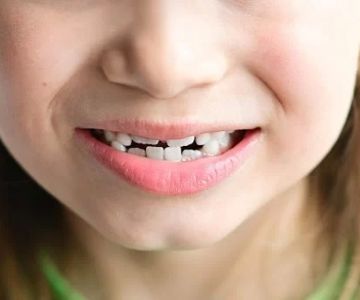
- causes-of-tooth-enamel-cracking
- how-lifestyle-and-daily-habits-affect-enamel-health
- early-signs-and-symptoms-of-cracked-enamel
- tooth-enamel-repair-and-treatment-options
- real-case-study-of-enamel-damage-and-repair
- importance-of-seeking-professional-help-for-enamel-cracks
1. Causes of Tooth Enamel Cracking
Tooth enamel, the hardest substance in the human body, may seem indestructible. However, it is surprisingly vulnerable to damage when exposed to certain stressors. The most common causes of tooth enamel cracking include:
1.1 Physical Trauma
Biting into hard objects like ice, nuts, or unpopped popcorn kernels can cause immediate fractures. Accidents during sports or falls can also lead to enamel cracks.
1.2 Bruxism (Teeth Grinding)
Many people grind their teeth during sleep, often unknowingly. Over time, this repetitive pressure wears down enamel and may cause it to crack. It’s especially prevalent in people who are under chronic stress.
1.3 Sudden Temperature Changes
Consuming hot coffee followed by ice water, or vice versa, creates rapid expansion and contraction in teeth, which weakens enamel and may cause it to crack over time.
1.4 Natural Aging
Enamel becomes thinner as we age, making it more susceptible to cracking even under normal chewing pressure. This is a gradual process that often goes unnoticed until more serious symptoms develop.
1.5 Poor Dental Hygiene and Erosion
Acidic foods and beverages can erode enamel slowly. Once weakened, the enamel is less resistant to fractures from even everyday use.
2. How Lifestyle and Daily Habits Affect Enamel Health
Your everyday routines could be silently contributing to enamel damage. Let’s dive deeper into how certain lifestyle habits may exacerbate the risk of enamel cracking:
2.1 Dietary Habits
High consumption of acidic drinks like soda, citrus juices, and wine can demineralize enamel. Combine this with frequent snacking, and your enamel may not have time to recover between acid attacks.
2.2 Smoking and Alcohol Use
These habits dry out the mouth and reduce saliva production. Saliva is crucial in neutralizing acids and remineralizing enamel.
2.3 Inadequate Hydration
Dry mouth, often caused by dehydration or medication, makes teeth more vulnerable to plaque, acids, and cracking.
3. Early Signs and Symptoms of Cracked Enamel
Recognizing a cracked enamel early can prevent bigger issues such as tooth infection or loss. Some signs to watch for include:
3.1 Sensitivity to Hot and Cold
This is one of the first red flags. If you feel a sudden twinge when consuming temperature-sensitive foods or drinks, enamel damage could be the cause.
3.2 Visible Lines or Roughness
Look closely in the mirror under good lighting. Hairline cracks or uneven surfaces may appear, especially near the chewing edges.
3.3 Intermittent Toothache
Pain that comes and goes without a clear source might be due to micro-cracks letting bacteria inside the tooth structure.
4. Tooth Enamel Repair and Treatment Options
Fortunately, there are several repair options for tooth enamel cracking, depending on the severity of the damage:
4.1 Fluoride Treatments
For early enamel weakening, fluoride gels or varnishes help remineralize and strengthen enamel. These are often applied during routine dental visits.
4.2 Dental Bonding
This involves using a tooth-colored resin to fill in the cracks and restore the shape of the tooth. Bonding is ideal for minor to moderate enamel cracks.
4.3 Veneers
In cosmetic cases, veneers can cover the damaged tooth surface, giving both protection and aesthetic improvement. This is common in front teeth.
4.4 Crowns
For deeper cracks or compromised tooth structure, a dental crown can offer long-term protection by encasing the entire tooth.
4.5 Night Guards
If bruxism is the root cause, wearing a custom night guard will protect enamel during sleep and prevent further damage.
For tailored recommendations and access to trusted dental products, visit Dentistry Toothtruth — your one-stop solution for dental care tools and professional guidance.
5. Real Case Study of Enamel Damage and Repair
One of our patients, Sarah, a 32-year-old office manager, came in with complaints of tooth sensitivity and occasional sharp pain. She had a habit of chewing ice and drank lemon water daily. Examination revealed multiple enamel microcracks on her molars.
Our team performed fluoride therapy, followed by resin bonding on more significant cracks. A night guard was also prescribed due to signs of nighttime grinding. Six months later, her symptoms had vanished, and her enamel was visibly more intact. Sarah reported feeling much more confident in her smile.
6. Importance of Seeking Professional Help for Enamel Cracks
Delaying treatment for cracked enamel can result in serious dental issues like cavities, infections, or even tooth loss. A qualified dentist can diagnose the extent of enamel damage using digital imaging and develop a customized treatment plan.
Moreover, self-diagnosing or relying on home remedies can do more harm than good. Trusting a professional and using dentist-recommended products can make all the difference. Don’t ignore the warning signs—early intervention is key.
Our platform, Dentistry Toothtruth, connects you with the best dental experts, products, and care strategies tailored to your enamel protection needs.







 Chiarina Iregui D.D.S.5.0 (2 review)
Chiarina Iregui D.D.S.5.0 (2 review) Canton Orthodontics4.0 (117 review)
Canton Orthodontics4.0 (117 review) All Star Orthodontics5.0 (566 review)
All Star Orthodontics5.0 (566 review) Glenn Fortner DDS4.0 (237 review)
Glenn Fortner DDS4.0 (237 review) Buttacavoli Dental Arts5.0 (16 review)
Buttacavoli Dental Arts5.0 (16 review) Mission Dental Arts5.0 (167 review)
Mission Dental Arts5.0 (167 review) The Importance of Oral Health Education During Pregnancy for a Healthy Pregnancy
The Importance of Oral Health Education During Pregnancy for a Healthy Pregnancy Best Tips for Brushing Your Teeth Properly for Healthy Gums: Essential Techniques for Oral Health
Best Tips for Brushing Your Teeth Properly for Healthy Gums: Essential Techniques for Oral Health Why Skipping Dental Checkups Can Lead to Bigger Oral Health Problems
Why Skipping Dental Checkups Can Lead to Bigger Oral Health Problems Advantages of Porcelain Dental Restorations
Advantages of Porcelain Dental Restorations How Can Diabetes Cause Tooth and Gum Problems? Preventing and Managing Oral Health Issues
How Can Diabetes Cause Tooth and Gum Problems? Preventing and Managing Oral Health Issues Healthy Habits for Promoting Good Oral Health and Hygiene: Tips for a Healthy Smile
Healthy Habits for Promoting Good Oral Health and Hygiene: Tips for a Healthy Smile